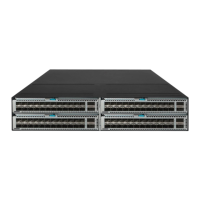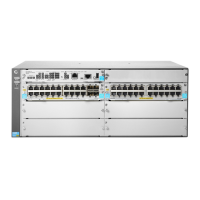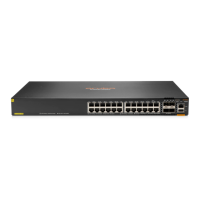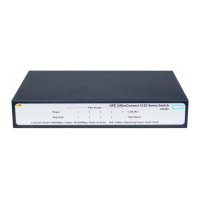241
Step Command Remarks
4. Assign the port to the original
VLANs and the translated
VLANs.
• For the trunk port:
port trunk permit vlan
vlan-id-list
• For the hybrid port:
port hybrid vlan vlan-id-list
tagged
N/A
5. Configure a many-to-one
VLAN mapping.
vlan mapping
uni
{
range
vlan-range-list |
single
vlan-id-list }
translated-vlan
vlan-id
By default, no VLAN mapping
is configured on an interface.
6. Enable DHCP snooping entry
recording.
dhcp snooping binding record
By default, DHCP snooping
entry recording is disabled on
an interface.
Configuring the network-side port
Step Command Remarks
1. Enter system view.
system-view
N/A
2. Enter Layer 2 Ethernet
interface view or Layer 2
aggregate interface view.
• Enter Layer 2 Ethernet interface
view:
interface interface-type
interface-number
• Enter Layer 2 aggregate
interface view:
interface bridge-aggregation
interface-number
N/A
3. Set the link type of the port.
• Set the port link type to trunk:
port link-type trunk
• Set the port link type to hybrid:
port link-type hybrid
By default, the link type of a
port is
access
.
4. Assign the port to the
translated VLANs.
• For the trunk port:
port trunk permit vlan
vlan-id-list
• For the hybrid port:
port hybrid vlan vlan-id-list
tagged
N/A
5. Configure the port as a
DHCP snooping trusted port.
dhcp snooping trust
By default, all ports that
support DHCP snooping are
untrusted ports when DHCP
snooping is enabled.
6. Configure the port as an ARP
trusted port.
arp detection trust
By default, all ports are ARP
untrusted ports.
7. Configure the port to use the
original VLAN tags of the
many-to-one mapping to
replace the VLAN tags of the
packets destined for the user
network.
vlan mapping
nni
By default, the port does not
replace the VLAN tags of the
packets destined for the user
network.

